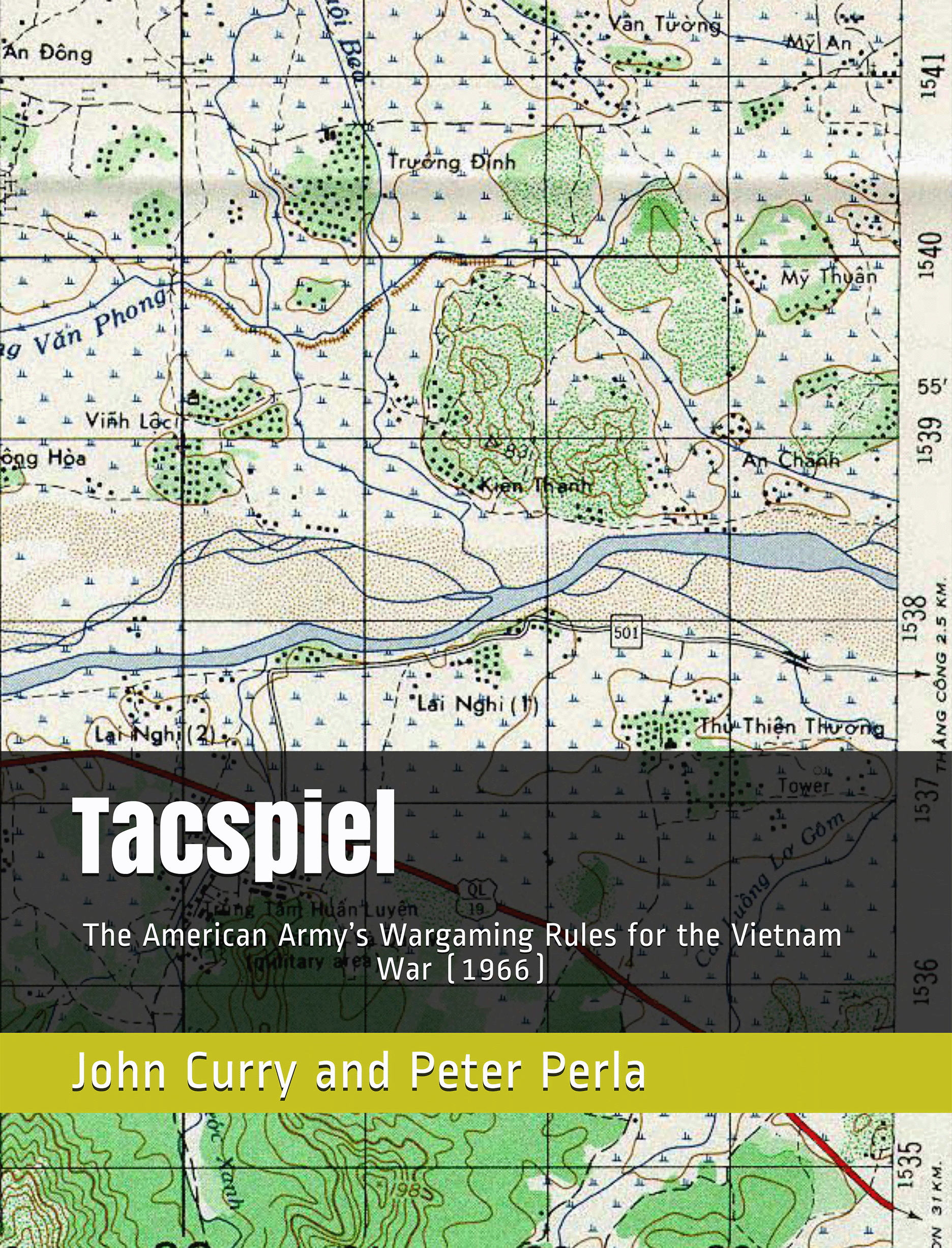The History of Wargaming Project
The project aims to make the largest possible collection of wargaming books and rules available to the modern reader. Ranging from second editions of wargaming classics, to professional wargaming rules used by the military and innovations in current wargaming.

|
|
Professional Wargaming

|
Tacspiel:
The American Army’s
Wargaming Rules for the Vietnam War (1966) 26 January 2025 4th edition Edited by John Curry, Pete Sizer and Peter Perla |
|---|
|
Tacspiel, for Counter Guerrilla Operations, was a detailed map based
simulation of counter insurgency warfare. It was used to develop many
successful strategies that were used in Vietnam. An army report at the
time said, 'Actual tactical changes, made as result of these games,
later paid off in an impressive fashion' .
The rules were map based playing with platoons and company sized units on typical operations. These rules are a very important statement on how the American Army, its commanders and officers fought the Vietnam War on a operational level. It also demonstrates that the standard books about the history of wargaming have errors. Having read the rules contained in this booklet and actually used them for wargaming, it is impossible to correlate this experience with the accounts of Tacspiel Counter Insurgency games contained in the standard history of wargaming books. The game was designed to represent a Vietnam type guerrilla war to train American officers and to develop tactics. As such it includes elements that a modern wargamer can easily ignore in using these rules for a wargame.The rules placed great emphasis on the order codes and order formats. This was necessary to allow each game to be reconstructed and analysed move by move by the operational analysts after the players had finished gaming. T he analysts might spend days replaying a game for the purposes of study. Typically, they would spend 3 days work looking at just one day played out on the map. A modern wargamer can greatly speed up the game by dispensing with all the order codes and simply record which unit should move to where to do what. The game was designed to be played with a blue team (the American and the South Vietnamese Army's) and the red team (the Vietcong and North Vietnamese Army NRA) in separate rooms. The two teams would study their maps and issue written orders based on what they knew. The umpires would interpret these orders on the central map and then tell the players what they could now see. It is very practical to run the game for wargamers with all the players on one side, presumably the American one, against a pre-planned umpire controlled guerrilla force. The players need to have a clear chain of command, with each player having their own responsibilities in the game. Typically, you might have a battalion commander with company commanders and a support commander. It must be said that a game played using Tacspiel for Counter Guerilla Operations is not your typical wargame. There is rarely a decisive finish to game. More often, each side inflicts some casualties and one side or the other has maneuvered into an arguably better position by the end of a game. However, if you want to have some idea what it was like for junior commander in the Vietnam War, then playing Tacspiel gives you a strong idea about the operational problems they faced. The book can be purchased from Amazon and other online book stores |
Supporting Materials for Tacpsiel A good place to start for maps about the Vietnam War is Vietnam Centre link. This is the excellent Vietnam War Study Centre at Texas Tech University. You can also find maps at link |